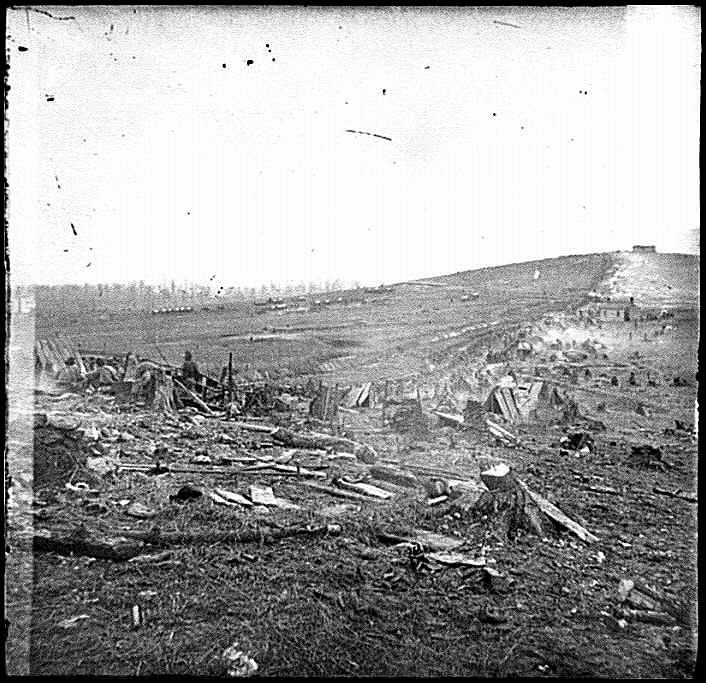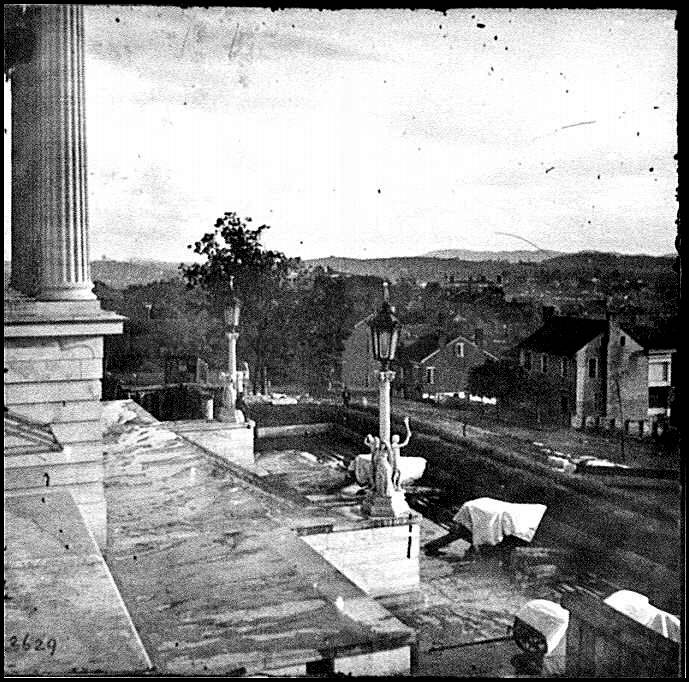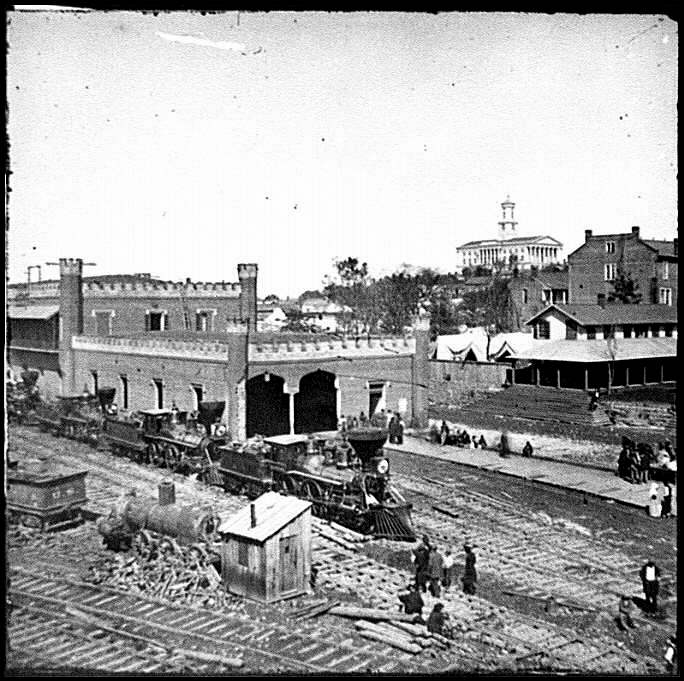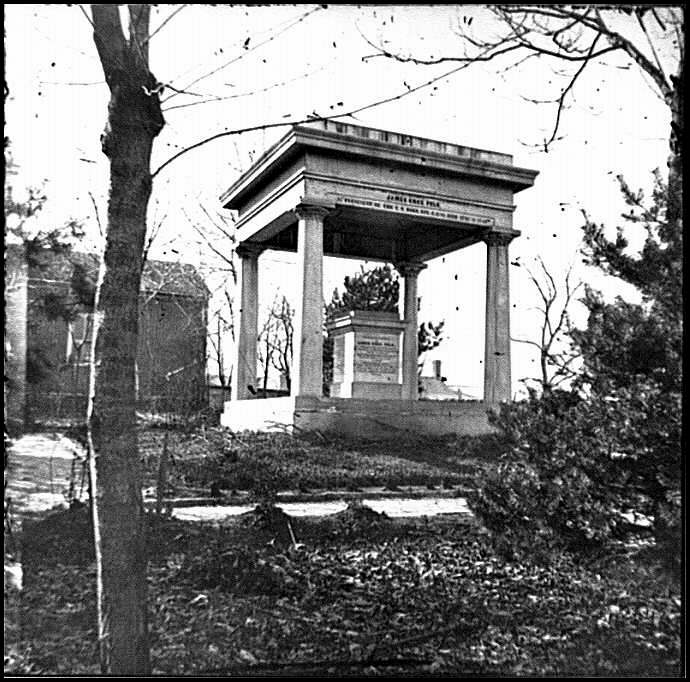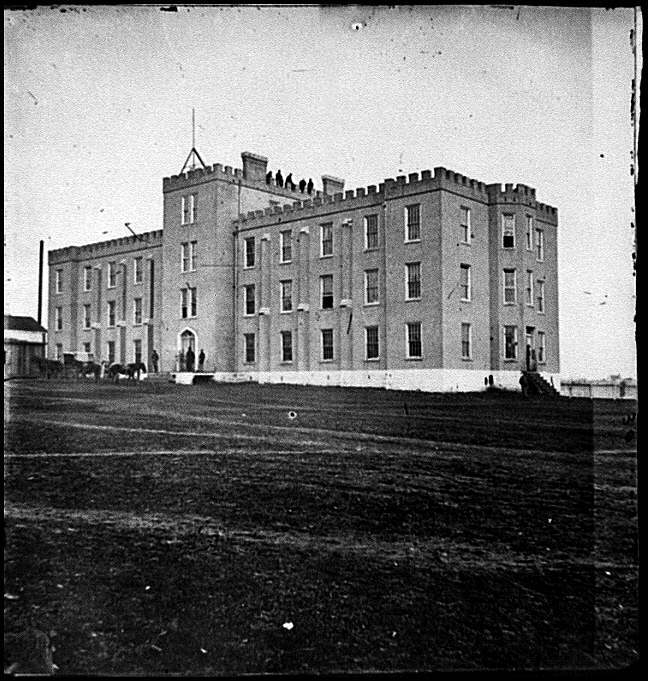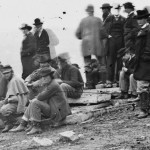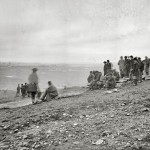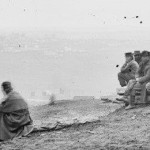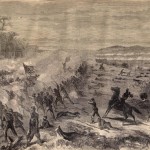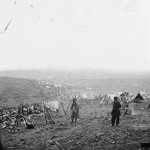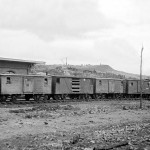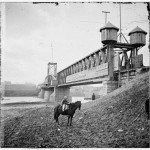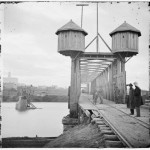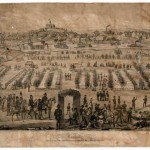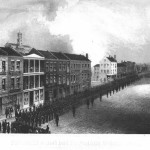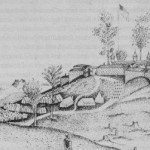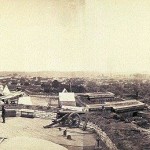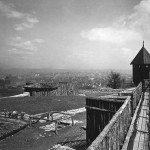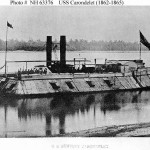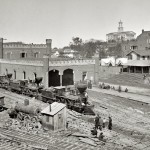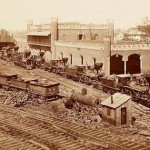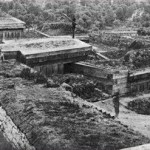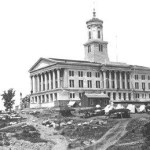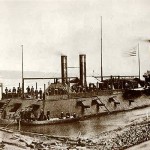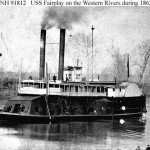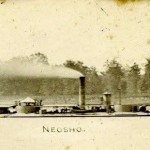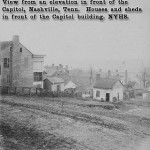Civil War Era Photographs of Nashville
The photographs below were a major feature of BONPS’s original website. Though they are grainy and colorless, they clearly reflect the image of a city under military control at a time of war.
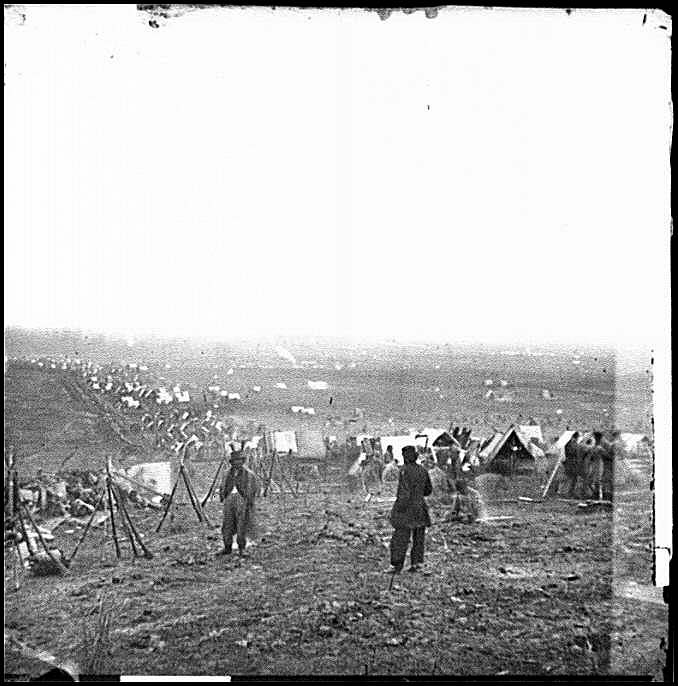
Federal Outer Line
The southern defensive line of the Federal works during the Battle of Nashville shows how close the troops camped to their fortifications. The photo was probably made from the vicinity of Fort Casino. Much of the countryside south of Nashville had been cleared of trees to build fortifications, to use as firewood during the winter weather, and to provide fields of fire for the artillery.
Federal Outer Line, Another View
This view of the abandoned Federal line shows Fort Morton on the horizon to the right and the Franklin Pike running diagonally through the valley. The defensive works of the Federals were never attacked during the battle.
Tennessee State Capitol
The magnificent Tennessee State Capitol, completed in 1859, is the focal point of Nashville, situated on a high hill. The structure was fortified with heavy guns trained on the town and ground beyond and was known as Fort Andrew Johnson. This view from the north portico looks southwest toward the Polk Place. It has just rained, and the cannon have been covered with tarpaulins.
Railroad Yard and Depot
The Nashville and Chattanooga rail yard near Spring Street boasts 13 locomotives in this photograph. In the distance can be seen the State Capitol. Railroads were used extensively by the military during the war. The enormous Federal supply depot at Nashville was connected by rail with Louisville to the north, and Murfreesboro, Chattanooga, and ultimately, Atlanta, to the south. The railroad lines outside of town were favorite targets of Confederate cavalry raiders.
Tomb of President James K. Polk
The tomb of President James Knox Polk was located in the side yard of the Polk Place at Vine and Union streets in Nashville. As widow of a past president, Mrs. Polk was respected by the Union Army and the residence protected. Today, Polk’s tomb is located to the east side of the Tennessee State Capitol grounds.
Fortified Bridge Over the Cumberland River
The swing-span bridge over the Cumberland River looking west toward Nashville from Edgefield. The bridge, built in the 1850s, could pivot around its central support to allow tall steamboats to pass. The Federals fortified the bridge with guard turrets, gates with loopholes, and sentries to protect the structure from raiders Nathan Bedford Forrest and John Hunt Morgan.
Univ. of Nashville Used as Federal Hospital
This three-story brick building built in 1855, Lindsley Hall of the University of Nashville, was used as a hospital by both armies. The foundation was white-washed with lime to prevent “contagion.” The main university buildings stood on College Hill, near the site of today’s Howard School. Many of the larger buildings in Nashville were used as hospitals by the Federals during their occupation.
____________________________________________________________
About the Photographs:
Photographs taken by George N. Barnard (1819-1902) during 1864 while serving as official photographer to Gen. W.T. Sherman. Barnard photographed nearly 100 buildings either seized or built by and for the Federal Army of Occupation.
Civil War Photographs, 1861-1865; Compiled by Hirst D. Milhollen and Donald H. Mugridge, Washington, D.C.; Library of Congress, 1977.
Reference: “Cities Under the Gun,” by James A. Hoobler. Rutledge Hill Press, Nashville, TN 1986
______________________________________________________________________
More Photos…
- Battle of Nashville spectators
- Watching Battle of Nashville
- Closer view of spectators
- Harper’s Weekly artist captures death of Union Col. Sylvester Hill of Iowa, killed by a sharpshooter during Union attack on Redoubt No. 3
- Federal encampments, Battle of Nashville
- Chattanooga Federal cavalry guarding railroad depot,1864
- Cumberland River bridge, guard towers
- Cumberland River bridge, guard towers
- Edgefield during Civil War
- Federal review in Nashville
- Ft. Negley during Civil War
- Nashville-Tennessee-Railroad-Depot-1864
- Nashville-Tennessee-Railroad-Depot-1864
- Ft. Negley bastion
- Pyle working on Shy's Hill painting
- Tennessee Capitol, cir. 1864
- USS Carondolet
- USS Fairplay
- USS Neosho
- View of Tennessee Capitol Building during Civil War
